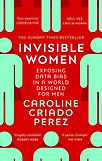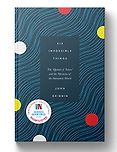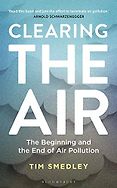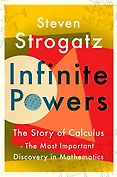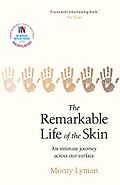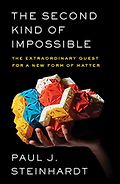Please tell us about the criteria that informed your selection for the best science books of 2019. What, for instance, counts as ‘science’?
Science is a broad set of disciplines, one which is growing year upon year as we learn more about the world and universe around us. We are also building new digital worlds that are so complex that they need to be understood using science. From biology to cosmology, from data science to climate science, we take a broad view of what science is.
“One of the key features of science is that its predictions are defeasible—that is, open to revision”
The scientific method requires you to try to make sense of the world theoretically and also by reference to experiments that generate results your theories predict or anticipate. One of the key features of science is that its predictions are defeasible—that is, open to revision. When we make predictions that turn out to be wrong or not in accord with observations we have to revise our theories or develop new accounts of what might be going on.
What makes a good science book?
I think a really good science book has most or all of the following properties. It tells a story and has a strong narrative. It shows science as a human endeavour, with all of the ups and downs, triumphs and setbacks, that that entails. It shows that scientists are women and men, just like the readers. It is accessible to the general reader, and doesn’t condescend. It delights and teaches you something you simply didn’t know about the world around you—whatever your own background.
Moving on to your first book, please tell us about Invisible Women.
Invisible Women is an exposé of just how much of the world around us is designed around the default male. Deploying a huge range of data and examples, Caroline Criado Perez, who is a writer, broadcaster and award winning campaigner, presents on overwhelming case for change. Every page is full of facts and data that support her fundamental contention that in a world built for and by men, gender data gaps, biases and blind spots are ubiquitous. These gaps in our knowledge and understanding, whether intentioned or not, lead to systematic discrimination against women.
“In a world built for and by men, gender data gaps, biases and blind spots are ubiquitous”
From daily life to the work place, product design to health science, public policy to emergency response, Perez gives example after example of gender bias: smart phones too big for a female hand, voice recognition software 70% more likely to recognise male voices than female, automotive design that renders women 47% more likely to be seriously injured in a crash, and pain relief drugs that simply don’t work on female physiology. All of this in a digital age where we are collecting and using data to ever-greater scales, but still in so very many cases making the same mistakes and assumptions. She argues that half the population is effectively invisible.
Perez reminds us that when products are designed, the facts of the matter that relate to how most women are built and function are either simply ignored, or else the data has not been acquired. In the design of infrastructure from transport to public conveniences, drugs to protective clothing, hi tech to the value of work—all are used to illustrate and make the central thesis of the book—women are rendered invisible by the assumptions and presumptions of our technologically driven societies.
Get the weekly Five Books newsletter
The book, with all its passion and energy, is not about blame or conspiracy. It is a relentless and compelling appeal to examine the facts, to learn from the data, in key areas to seek much more contextualised data. It is a litany of sins of omission and commission. If we do not confront this asymmetry of design and engineering, of policy and attitudes, we perpetuate continued unfairness, discrimination and we foreclose on the talents and ingenuity of half of our species.
What makes Six Impossible Things: The ‘Quanta of Solace’ and the Mysteries of the Subatomic World stand out?
This is a riveting and mind-bending book that explains the various ways in which scientists have sought to make sense of the quantum world. John Gribbin is one of the UK’s foremost science writers, an astrophysicist and Visiting Fellow at the University of Sussex. He has written a series of books on a wide range of topics, but quantum physics is one he keeps revisiting, and here he does so brilliantly.
Making sense of quantum physics flies in the face of ordinary assumptions about how the world works. It tells us that a particle can be in two places at once. That a particle is also a wave, and everything in the quantum world can be described entirely in terms of waves, or entirely in terms of particles. It demonstrates teleportation of photons and promises the advent of computers the like of which we have never seen before—quantum computers that are fundamentally secure in themselves whilst having the potential to break any form of existing security in classical computers.
Five Books interviews are expensive to produce. If you're enjoying this interview, please support us by donating a small amount.
Gribbin effortlessly explains the quantum phenomena themselves, the history of their discovery and the challenges they pose. He does this with elegant simplicity whilst pointing out how deeply unsettling these results are for our common sense intuitions of how the world behaves around us. For this he provides a range of ‘solaces’—six ways in which scientists have tried to make sense of the quantum phenomena. Each of these interpretations of quantum physics invites the response ‘But that is impossible’. Whether it is the Many-Worlds interpretation or the original Copenhagen interpretation, John Gribbin describes each with superb clarity.
The author himself remains ‘agnostic’ about the merits of the particular solaces. Since all are crazy compared to common sense, he leaves the reader to determine their own preference for a particular interpretation. However, just because an idea is crazy does not mean it is wrong. Gribbin reminds us that we might still be missing something, we may discover a new way to make sense of the all the results he so clearly presents. But for now we are left in a world that is exquisitely characterised and yet deeply mysterious.
And how about The Remarkable Life of Skin?
In recent years we have been delighted and informed by books that provide a very different view on the human body. Giulia Edwards gave us the best-selling Gut: The Inside Story of Our Body’s Most Underrated Organ. Monty Lyman has provided a wonderful addition to this genre. A dermatologist himself, his mission in The Remarkable Life of Skin: An Intimate Journey Across Our Surface is to help us understand and appreciate this the largest human organ of all.
He has written a compelling account of this most overlooked, and in many respects mysterious, part of ourselves. It is a book packed with information, entertaining and humane. He explains the structure and function of the skin. How it develops, how it is affected by diet, ageing, our environment, and our own mental and physical situation. As we peel back the skin, we are introduced to a remarkable and complex landscape: its various layers and their functions, the subtle responses of a plethora of specialist structures, the chemistry and immunology, the ecosystem of micro-organisms that protects and sometimes assault us.
“As we peel back the skin, we are introduced to a remarkable and complex landscape”
The structure of the book makes it an effortless read. We are presented with disorders and diseases that could make anyone’s skin crawl or else set off a sympathetic itch or scratch. So it is fitting that the book explains those reactions, too! It explains how our sense of touch is organised, from pain to a lover’s caress. He discusses the role of UV and sunlight, a delicate balance between sunlight’s life-giving properties and its potential to wreak havoc. He takes us through the process by which ultra violet radiation leaves a trail of DNA destruction in its wake, explaining that sun exposure is responsible for epidemic levels of disease in many parts of the world. Whilst warning of the dangers, he also beautifully describes the processes by which the skin repairs damage in all its forms, minute by minute.
Here is a story that combines fascinating clinical insights with biology, psychology, sociology, anthropology and history. It is replete with stories about how the skin has featured in our history and culture, how it has served to identify and segregate. You will not be able to see yourself in quite the same way again.
Air pollution is huge risk to health in many parts of the world. How does Clearing the Air help readers engage with the challenges?
Tim Smedley, an award-winning sustainability expert, has brought us a cracker of a book with his Clearing the Air: The Beginning of the End of Air Pollution. He has travelled the world to understand its impact and what we might do to solve this urgent problem.
He pulls no punches in this forensically written and evidenced book. He introduces us to the problem through three historical examples: the London smog of 1952, with its 8,000 to 12,000 deaths; the 2013 Beijing ‘Airpocalypse’, in which air pollution in China’s capital resulted in its Children’s Hospital dealing with 7000 admissions a day; and Delhi, where in 2017 visiting royals could not see the guard of honour. The data suggests that worldwide air pollution is killing 19,000 people a day. This is an environmental emergency.
“The data suggests that worldwide air pollution is killing 19,000 people a day. This is an environmental emergency.”
It is a book that lays out in compelling detail the causes and effects, impact and consequences of air pollution. The author points out that in many parts of the world, whilst our air may not have the look of a 1950s pea-souper, its quality may be just as injurious. This is due to the microscopically fine particles that are the result of a multitude of processes. He tells us that nine out of ten people breathe air with high levels of pollutants.
Tim Smedley provides reams of data, cases studies galore and stories of bad policies and bad behaviour that make for an urgent call to action. He points out that much of the real damage is being done by particulates that are much smaller than current legislation deals with, and he provides real solutions to these wicked problems.
Reading this book will change your behaviour. It should change the behaviour of policy makers, too. This book contains a blueprint for saving our cities, which includes banning all petrol and diesel cars in city centres, replacing diesel buses and trains with electric vehicles, and an end to wood-burning stoves and coal fires. These are practical, achievable goals—but we have to be aware of the scale of the problem. It’s a problem that is increasingly revealed by new technologies and devices that can sense the quality of the air we breathe. That data, and this book, will turn out to be enormously important in dealing with the challenge we all face.
The Second Kind of Impossible is about quasicrystals. What are they, and what does the author tell us?
Classic crystals are solid materials in which the atoms are arranged in definite repeating patterns. The patterns are clusters of atoms that repeat over and over in any direction with equal spacing—periodically. Quasicrystals are different. Like crystals, quasicrystals contain an ordered structure, but the patterns are more subtle. They do not recur at precisely regular intervals.
Paul Steinhardt, a world-renowned physicist, takes us on a journey through the history of our understanding of crystals. He explains how scientific orthodoxy came to a firm view as to the sorts of structures nature would generate. These were periodic, repeating patterns of a particular geometric structure. Steinhardt’s own work was initially theoretical and inspired by, amongst others, Roger Penrose. This showed how non-periodic structures could be generated that packed all the space available using for example two different structures.
Get the weekly Five Books newsletter
If such structures existed, then they would produce very distinct crystallographic diffraction patterns—these are the images that result when X-Rays are passed through crystals and hit the atoms in their particular arrangements. No one had ever seen these patterns, and they were thought to be impossible. The ‘second kind of impossible’ references Steinhardt’s teacher Richard Feynman who used ‘impossible’ to sometimes allude to “something amazing that contradicts what we know to be true”. Feynman saw the diffraction patterns of a kind of matter that had not been encountered yet and deemed it in this sense ‘impossible’.
The book recounts how this type of matter was first produced synthetically in the laboratory. In the second part of the book we go on a globe-hopping journey from Princeton to Italy to the remote mountains of Russia’s Kamchatka Peninsula in pursuit of tiny fragments of a meteorite forged at the birth of the solar system which contained the first confirmed examples of naturally occurring quasicrystals. Steinhardt himself led the expedition. This is a book full of great science and human adventure written from the perspective of someone at the heart of that story.
Please tell us about Infinite Powers.
In this book, Steven Strogatz takes us on a magisterial journey through the history of mathematics, charting the development of one of the greatest achievements in human thought. Strogatz is Professor of Applied Mathematics at Cornell University and one of the most highly cited mathematicians in the world. He writes popular science books that make challenging material accessible and are a joy to read.
Infinite Powers is a wonderful motivational book for anyone taking a course in calculus. For those readers who remember calculus with dread from maths classes of yore, here is a text that explains just why the material has always had such a key place in our curricula. It charts a history of ideas that sought to make sense of the world through mathematics—to develop methods that find the deep laws and patterns that govern nature and enable us to build everything from computers to jet engines, televisions to microwaves.
Five Books interviews are expensive to produce. If you're enjoying this interview, please support us by donating a small amount.
The book explains how key developments in the work of Pythagoras, Archimedes and other mathematicians from the classical era laid the foundations for calculus, how these ancient scholars developed some of its most important concepts, from infinity to the ratio underpinning pi. The text is suffused with examples to lead the reader through the key concepts and developments that eventually led to the methods of Newton and Leibniz. Here he recounts the battle of ideas, the different personalities behind modern calculus.
Strogatz brings the story of the calculus right up to date with its applications in contexts as various as modelling HIV epidemics to the differential equation that predicted antimatter, understanding how DNA coils to AI and data compression. Everyone who reads this book and has access to a microwave should use his shredded cheese method to calculate the speed of light. Such is the power of the infinitesimal calculus!
Read more about Infinite Powers.
The physicist Tom McLeish recently wrote, “Science education favours the presentation of results, and a focus on knowledge, rather than the human stories of wonder, imagination, failed ideas and those glorious and uninvited moments of illumination that thread through the lives of all who actually do science.” Do you think he’s right?
Science is a profoundly human endeavour. The stories of triumph and success in science, alongside the failures and despair are, compelling. They demonstrate that scientists are human. They demonstrate the power of the scientific method but also invite us to think how things can go wrong. The human story of science is a fantastic way to inspire us all.
See all the recommendations in our best books of 2019 series.
Five Books aims to keep its book recommendations and interviews up to date. If you are the interviewee and would like to update your choice of books (or even just what you say about them) please email us at [email protected]

